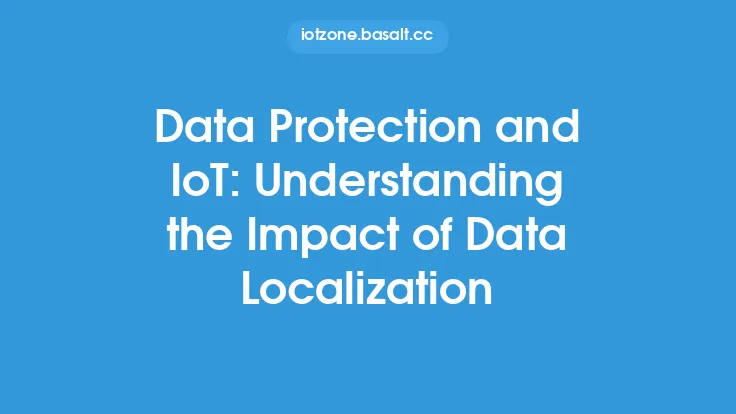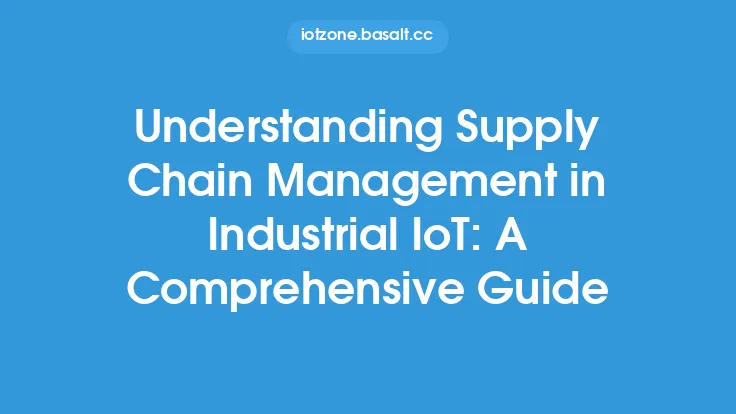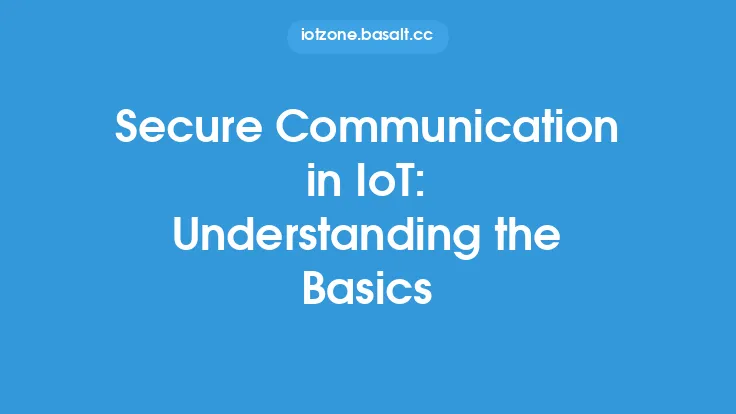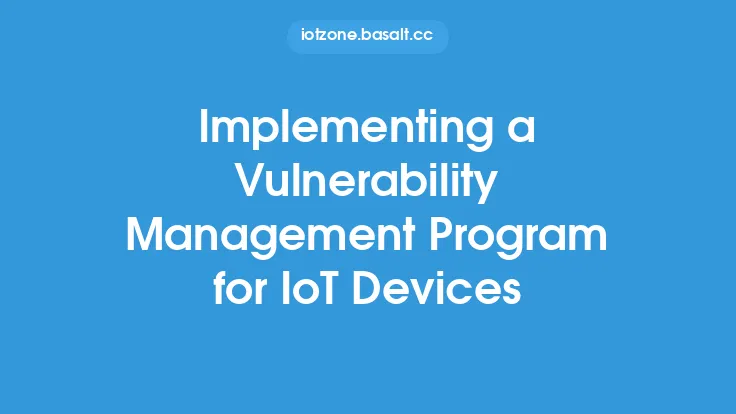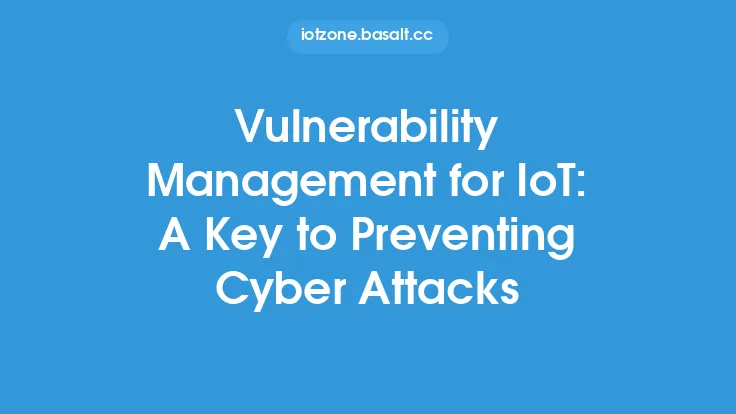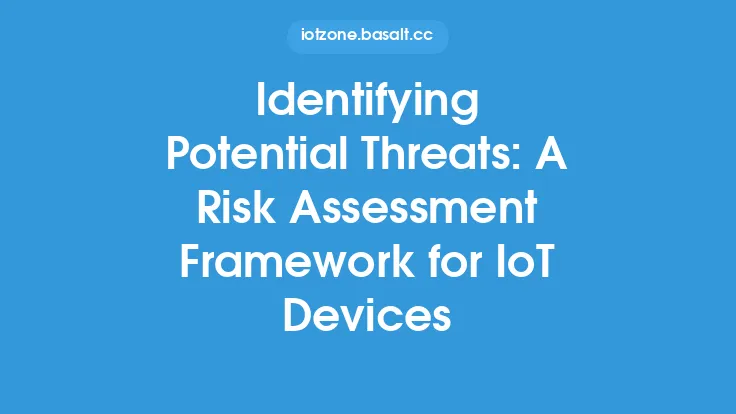The Internet of Things (IoT) has revolutionized the way we live and work, with billions of connected devices collecting and exchanging data. However, this increased connectivity has also raised concerns about security, privacy, and safety. As a result, regulatory frameworks have been established to ensure that IoT devices and systems meet certain standards and guidelines. In this article, we will explore the global perspective on IoT regulatory frameworks, highlighting the key aspects, challenges, and best practices for compliance.
Introduction to IoT Regulatory Frameworks
IoT regulatory frameworks are designed to address the unique challenges posed by the IoT ecosystem. These frameworks typically cover aspects such as device security, data protection, privacy, and safety. The goal is to ensure that IoT devices and systems are designed and implemented with security and privacy in mind, minimizing the risk of cyber threats, data breaches, and other malicious activities. Regulatory frameworks can be categorized into two main types: prescriptive and performance-based. Prescriptive frameworks provide detailed requirements and guidelines, while performance-based frameworks focus on outcomes and results.
Global IoT Regulatory Landscape
The global IoT regulatory landscape is complex and diverse, with different countries and regions having their own set of rules and guidelines. In the United States, the Federal Trade Commission (FTC) and the National Institute of Standards and Technology (NIST) play a key role in regulating the IoT ecosystem. The European Union's General Data Protection Regulation (GDPR) and the Radio Equipment Directive (RED) are also significant, as they set standards for data protection and device security. In Asia, countries such as China, Japan, and South Korea have established their own IoT regulatory frameworks, often with a focus on industry-specific requirements.
Key Components of IoT Regulatory Frameworks
IoT regulatory frameworks typically consist of several key components, including:
- Device security: Requirements for secure device design, development, and deployment, such as secure boot mechanisms, encryption, and secure firmware updates.
- Data protection: Guidelines for collecting, storing, and processing personal data, including consent, data minimization, and data protection by design and by default.
- Privacy: Rules for protecting individual privacy, including transparency, notice, and choice.
- Safety: Standards for ensuring the safety of IoT devices and systems, including electromagnetic compatibility, electrical safety, and functional safety.
- Interoperability: Requirements for ensuring seamless communication and interaction between different IoT devices and systems.
Technical Requirements for IoT Regulatory Compliance
To ensure compliance with IoT regulatory frameworks, device manufacturers and developers must implement various technical requirements, such as:
- Secure communication protocols: Implementing secure communication protocols, such as TLS, DTLS, or CoAP, to protect data in transit.
- Encryption: Using encryption algorithms, such as AES or RSA, to protect data at rest and in transit.
- Secure firmware updates: Implementing secure firmware update mechanisms, such as secure boot and differential updates, to ensure that devices can be updated securely.
- Penetration testing and vulnerability assessment: Conducting regular penetration testing and vulnerability assessments to identify and address potential security weaknesses.
Challenges and Opportunities in IoT Regulatory Compliance
While IoT regulatory frameworks provide a necessary foundation for ensuring security, privacy, and safety, they also pose challenges for device manufacturers and developers. Some of the key challenges include:
- Complexity: The complexity of IoT regulatory frameworks can make it difficult for companies to navigate and ensure compliance.
- Cost: Implementing IoT regulatory requirements can be costly, particularly for small and medium-sized enterprises.
- Innovation: Overly prescriptive regulatory frameworks can stifle innovation, as companies may be reluctant to invest in new technologies and business models.
However, IoT regulatory compliance also presents opportunities, such as:
- Increased trust: Compliance with IoT regulatory frameworks can increase trust among consumers and businesses, driving adoption and growth.
- Improved security: Implementing IoT regulatory requirements can improve the overall security posture of IoT devices and systems.
- Competitive advantage: Companies that prioritize IoT regulatory compliance can gain a competitive advantage, as they are better positioned to address emerging threats and opportunities.
Best Practices for IoT Regulatory Compliance
To ensure compliance with IoT regulatory frameworks, device manufacturers and developers should follow best practices, such as:
- Conducting regular risk assessments: Identifying and addressing potential security and privacy risks.
- Implementing secure design principles: Designing IoT devices and systems with security and privacy in mind.
- Providing transparency and notice: Informing users about data collection, storage, and processing practices.
- Ensuring interoperability: Implementing standards and protocols that enable seamless communication and interaction between different IoT devices and systems.
- Staying up-to-date with regulatory developments: Monitoring regulatory updates and changes to ensure ongoing compliance.
Conclusion
IoT regulatory frameworks play a critical role in ensuring the security, privacy, and safety of IoT devices and systems. While the global regulatory landscape is complex and diverse, there are common themes and best practices that can help device manufacturers and developers navigate the requirements. By prioritizing IoT regulatory compliance, companies can increase trust, improve security, and gain a competitive advantage in the market. As the IoT ecosystem continues to evolve, it is essential to stay informed about emerging regulatory developments and to adopt a proactive approach to compliance.
